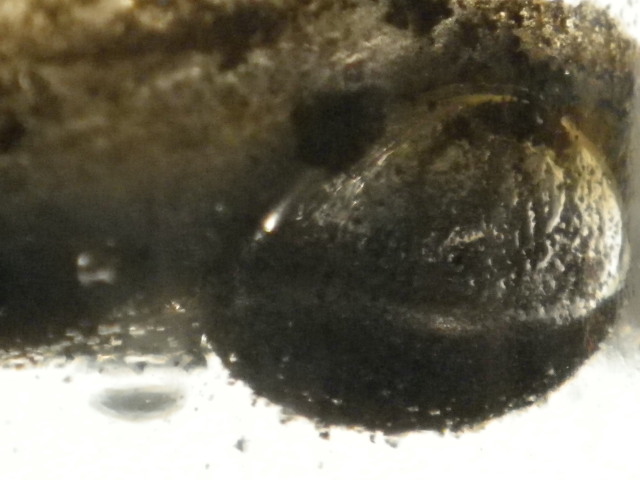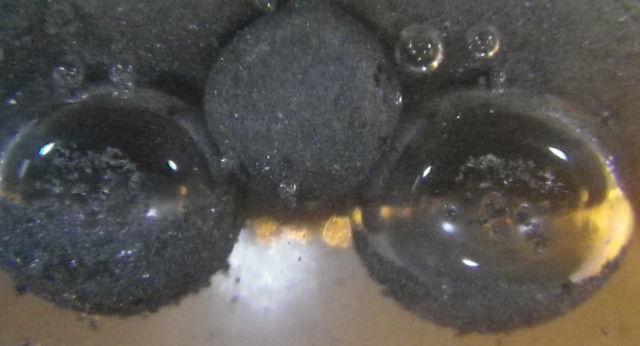to Former page to Next page
The bubbles are produced similarly to the case without calcium sulfite. The calcium sulfite hardly changes the reaction of the carbonated water and iron. It is concluded that the chemical evolution by the bubble is possible in case of neutral acidity. So, although there are lots of rocks of sulfide salt in Mars, it is expected to get the knowledge on chemical evolution in the project that takes back rocks from Mars.

Fig.22 Formation of bubbles in the carbonated water (50cc) that was mixed with iron powder (5g) and calcium sulfite (CaSO4: 5g) [after 12 hours from the start]
4.1.d Effects of calcium oxide (CaO) to the iron carbide bubble
The water becomes cloudy when powder of calcium oxide (2g) is put into the carbonated water (50cc) that is mixed with iron (5g). After a while, the water becomes clear and the substance is deposited at the bottom of the bottle. As for bubbles, most of the bubbles disappear right away at first. After the certain period, the bubbles appear only on the glass wall as shown in Fi.g 23.

Fig.23 Formation of bubbles in the carbonated water (50cc) that was mixed with iron powder (5g) and calcium carbonate (CaO: 2g) [after 23hours from the start]
Moreover, those bubbles disappear after 3days as shown in Fig 24. This reaction can be understood as follows. At first, the calcium oxide reacts with water and calcium hydroxide (Ca(OH)2) is made. The water changed to alkalinity due to calcium hydroxide. So, membrane of bubble dissolved in the water. But the calcium hydroxide reacts with carbonate water. The calcium carbonate (CaCO3) is made. The water gradually changes towards neutral. It is concidered that the neutralization does not acomplished in this case of Fig.23, and 24.
-4.3- to Index